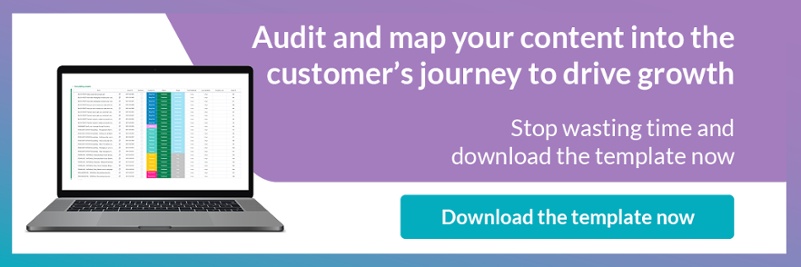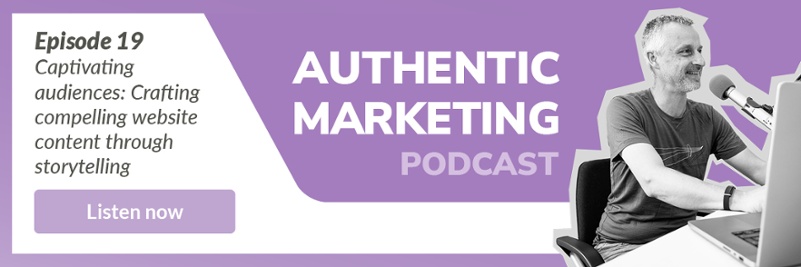Boost your lead generation: The essential collateral every website should have

Website is the essential part of every business, and it is usually the first experience of your brand - the first taste. Imagine this, you come to a new shiny restaurant, but there’s no menu and waitress can’t explain to you what they can offer either, I bet you will get up and leave and go to next door pizza place, with a clear menu. Because now you are hungry and frustrated and this place offers you a clear solution to make your life better. The same works for your website, if your customer can’t see value you can offer in less than 1 min on your website, they will leave.
Your website serves as the virtual storefront of your company, and it's essential to have the right collateral in place to capture the attention of potential customers and convert them into leads. In this blog post, we will explore the key collateral elements that you should have on your website, and how to use storytelling when creating it, to attract and convert new leads.
The storytelling structure for marketing
There is:
- A hero, who in storytelling for marketing is always the customer
- who has a problem and
- you as the brand are the guide who shows the hero how to solve his problem,
- because you have a plan and
- tell the hero what he has to do (Call To Action).
- You show him what will happen if he refuses your help (Failure)
- and you guide him to the happy end (he buys your product and becomes your customer).
For your homepage, lead magnets and blog posts you can easily apply brand storytelling:
1. Engaging homepage content
Your website's homepage is the virtual front door to your business. To leave a lasting impression on your visitors and convert them into loyal customers, you need to create engaging content that speaks to their hearts.
Understanding your target audience: Define your hero
First, define your hero, aka your customer. Define your customer as best you can, be specific. The trick is to create a persona that is well defined, but that the vast majority of your target audience will identify with. Analyse their demographics, preferences, and pain points. Conduct surveys and gather feedback to gain valuable insights. Utilise data from user behaviour on your website to tailor your content to their needs effectively.
Crafting compelling brand storytelling
Humans are naturally drawn to stories. Develop a brand narrative that resonates with your audience on an emotional level, be clear about what problem you are solving for your target audience. And don’t forget our role in storytelling is to be the mentor. As a mentor, it is your job to show exactly how you can solve a problem. Only you have the key to the problem: the plan. And lead your customer to transformation - show the world as it looks after the problem has been solved. Don’t forget to state the risks your main character faces if they don’t act upon your advice and use your product to solve their problem.
To illustrate the best way of creating storytelling website we have a great wireframe you can download here and start building it now.
Implementing clear call-to-action (CTA) buttons
Guide your visitors towards taking action with well-designed CTA buttons. If customers can't find the "checkout" on your website, they will leave your shop, or rather your site. Therefore, you need to clearly show your customers how they can do business with you.
With our storytelling method, you have drawn the prospect into your story, shown them a solution to his problem and given them a plan. Now it's time to get them to make a buying decision - with the call-to-action.
A call-to-action must be clear. "Learn more" should be deleted from your website forever. You don't want to teach anyone, you want to generate customers. "Learn more" is passive, it’s not a concrete instruction for action.
Instead, try call-to-actions that work such as:
- Buy now
- Book a consultation
- Call now
- For retailers: Buy a product
- For consultants: Book an appointment
- For agencies: Arrange an audit
Craft an inviting digital doorway, and your website will become a magnet for your target audience. But what if that first overview of your solution is not enough, or your customer is not ready to “buy” just yet. Don't worry, that's what the Transitional call-to-action is for. The transitional call-to-action is perfect for gaining your customer's trust, because the transitional calls-to-action leads into a parallel funnel, the value-added funnel. However, no customer gives their email without value in return. To lead the customer into the value-added funnel, you need a lead magnet that offers value in exchange for the email address.
2. Compelling lead magnets
Lead magnets are valuable resources or incentives offered to website visitors in exchange for their contact information. These can be e-books, whitepapers, templates, or any other content that addresses your audience's pain points and provides actionable insights.
A compelling lead magnet addresses the pain points of the target audience, think about the problem we defined above, providing them with valuable solutions in an easily accessible format. When crafting a lead magnet, keep the following key factors in mind:
Solving a problem: Identify the most pressing issues your audience faces and tailor your lead magnet to offer practical solutions.
Providing value: Ensure that your lead magnet provides genuine value and is perceived as something worth exchanging contact information for.
Targeted audience: Understand your audience's interests and preferences to create lead magnets that resonate with them on a personal level.
Easily accessible: Make the lead magnet easy to download or access to maximise its effectiveness.
Top lead magnet ideas:
Ebooks and guides: Offer in-depth insights and knowledge on a specific topic that appeals to your target audience.
Webinars and online workshops: Conduct live or pre-recorded sessions that provide valuable learning experiences.
Templates and checklists: Provide ready-to-use templates and checklists that simplify tasks for your audience.
Free tools and resources: Offer exclusive tools or resources that align with your audience's needs.
Don’t forget the easiest way to create a lead magnet is to help your customer solve their problem and add value.
Here's inspiration for successful lead generators:
- 5 tips for creating a website that converts
- The 3 most common mistakes in LinkedIn marketing
- 5 things you need to do to make your sales emails generate sales.
3. Informative blog content
Maintaining an active blog on your website is an excellent strategy to attract organic traffic and new leads. Relevant blog posts can drive people to your website, promote your brand and generate leads. In order for your blog post to engage your readers and stick in their minds, you need to use storytelling, because stories create emotions and emotions anchor information in our memory.
For a successful blog post, you have to adapt the language to the customer and the structure of the storytelling to the customer's problem. Of course, your customers don't have just one problem, but in your blog post you should focus on one problem. Your problem should form the beginning of your blog. In the middle of your blog post, you describe the plan you have as a mentor for your client's problem. You show empathy, because empathy is a feeling that creates a deep connection, and demonstrate the authority. In addition to empathy and authority, what the mentor needs most is a plan, because you need to convince your client that your plan offers the best solution to their problem. And finish it by telling your customer what their world looks like after they've used your product. Describe their happy ending.
Do you think there’s something missing here?
Then you are right, the element that brings you sales and, therefore, must not be forgotten is a call-to-action. Tell your customer exactly what next step you expect them to take. Here we have a great article of how to use storytelling in blog posts.
Having a the right collateral created using storytelling structure offers you a variety of opportunities to connect with your customers. Through storytelling, you can create an emotional connection with your target group, impressively present the benefits of your brand and increase your credibility. Stringent storytelling can also clearly differentiate you from your competitors.
At Demodia, we have been using storytelling to create website collateral for decades. For example, we build your storytelling website, so you can have a powerful website which connects you and your customers and brings in new leads. Do you have questions about how you too can use storytelling for your collateral? Book an appointment here, because your customers are waiting for you to share your story through your website.

